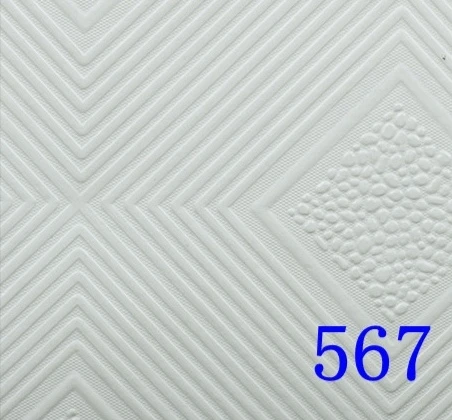- Afrikaans
- Albanian
- Amharic
- Arabic
- Armenian
- Azerbaijani
- Basque
- Belarusian
- Bengali
- Bosnian
- Bulgarian
- Catalan
- Cebuano
- Corsican
- Croatian
- Czech
- Danish
- Dutch
- English
- Esperanto
- Estonian
- French
- German
- Greek
- Hindi
- Indonesian
- irish
- Italian
- Japanese
- Korean
- Lao
- Malay
- Myanmar
- Norwegian
- Norwegian
- Polish
- Portuguese
- Romanian
- Russian
- Serbian
- Spanish
- Swedish
- Thai
- Turkish
- Ukrainian
- Uzbek
- Vietnamese
Dez . 17, 2024 05:39 Back to list
main tee ceiling grid
The Importance of Main Tee Ceiling Grid in Modern Construction
In the realm of modern construction, the ceiling grid is a crucial component that plays a significant role in both aesthetics and functionality. Among the various types of ceiling systems available, the main tee ceiling grid stands out due to its versatility and efficiency. This article explores the fundamentals of main tee ceiling grids, their benefits, and their applications in various settings.
A main tee ceiling grid involves a suspended ceiling system that consists of a series of metal frames, known as tees, arranged in a grid pattern. The main tees, typically 12 feet long, run perpendicular to the supporting structure and provide the primary support for the secondary tees, which are shorter segments that fill in the grid to create a uniform surface. This system allows for the installation of lightweight ceiling tiles or panels, providing an aesthetically pleasing finish while also concealing electrical wires, HVAC ducts, and plumbing systems.
One of the primary benefits of a main tee ceiling grid is its ability to enhance the acoustic performance of a space. The ceiling tiles used in conjunction with the grid can absorb sound, significantly reducing noise levels in environments such as offices, schools, and hospitals. This acoustic control is vital not only for comfort but also for productivity, as reduced noise distractions can lead to improved focus and efficiency in various professional settings.
Moreover, the installation of a main tee ceiling grid is relatively straightforward, making it an attractive option for contractors and builders. The modular nature of the ceiling grid allows for quick assembly and disassembly, which is particularly beneficial during renovations or repairs. If a section of the ceiling is damaged or if upgrades are needed, specific tiles can be replaced without disrupting the entire ceiling structure. This ease of maintenance is a significant advantage, especially in commercial spaces where uptime is critical.
main tee ceiling grid

Additionally, the design of the main tee ceiling grid allows for versatility in lighting installation. Recessed lighting fixtures can be integrated directly into the grid, enabling designers to create a cohesive look while providing adequate illumination. The ability to customize lighting arrangements further enhances the functionality of the space, ensuring that specific areas receive the proper lighting according to their intended use.
Energy efficiency is another crucial aspect of modern construction, and the main tee ceiling grid supports sustainable building practices. By allowing for the installation of energy-efficient lighting and HVAC systems directly within the ceiling space, building owners can reduce energy consumption and enhance the overall sustainability of the building. Furthermore, ceiling grids help improve insulation, contributing to lower heating and cooling costs.
Finally, the visual appeal of a main tee ceiling grid cannot be overlooked. Available in various finishes and styles, the grid can be customized to match the design aesthetic of any space. Whether it’s a sleek, modern office or a traditional retail store, the design possibilities are endless. This adaptability makes the main tee ceiling grid an integral part of interior design, allowing it to complement various architectural styles.
In conclusion, the main tee ceiling grid is a vital component in modern construction that combines functionality with visual appeal. Its advantages in terms of acoustic performance, ease of installation, energy efficiency, and design flexibility make it an ideal choice for a wide range of applications. As buildings continue to evolve, the importance of an efficient and adaptable ceiling system will only grow, solidifying the main tee ceiling grid's role in contemporary architecture.
-
Transform Interiors with PVC Gypsum Ceiling: A Stylish, Durable, and Moisture-Resistant SolutionNewsMay.19,2025
-
The Smart Interior Upgrade: Discover the Durability and Versatility of Gypsum Ceiling Access Panel SolutionsNewsMay.19,2025
-
The Smart Choice for Interior Design: Discover the Value of PVC Gypsum Ceiling SolutionsNewsMay.19,2025
-
Mineral Fiber Ceiling Tiles: The Smart Blend of Performance and AestheticsNewsMay.19,2025
-
Mineral Fiber Ceiling Tiles: The Superior Choice Over Gypsum for Sound and Fire SafetyNewsMay.19,2025
-
Mineral Fiber Ceiling Tiles: Eco-Friendly Strength and Style for Every CeilingNewsMay.19,2025







